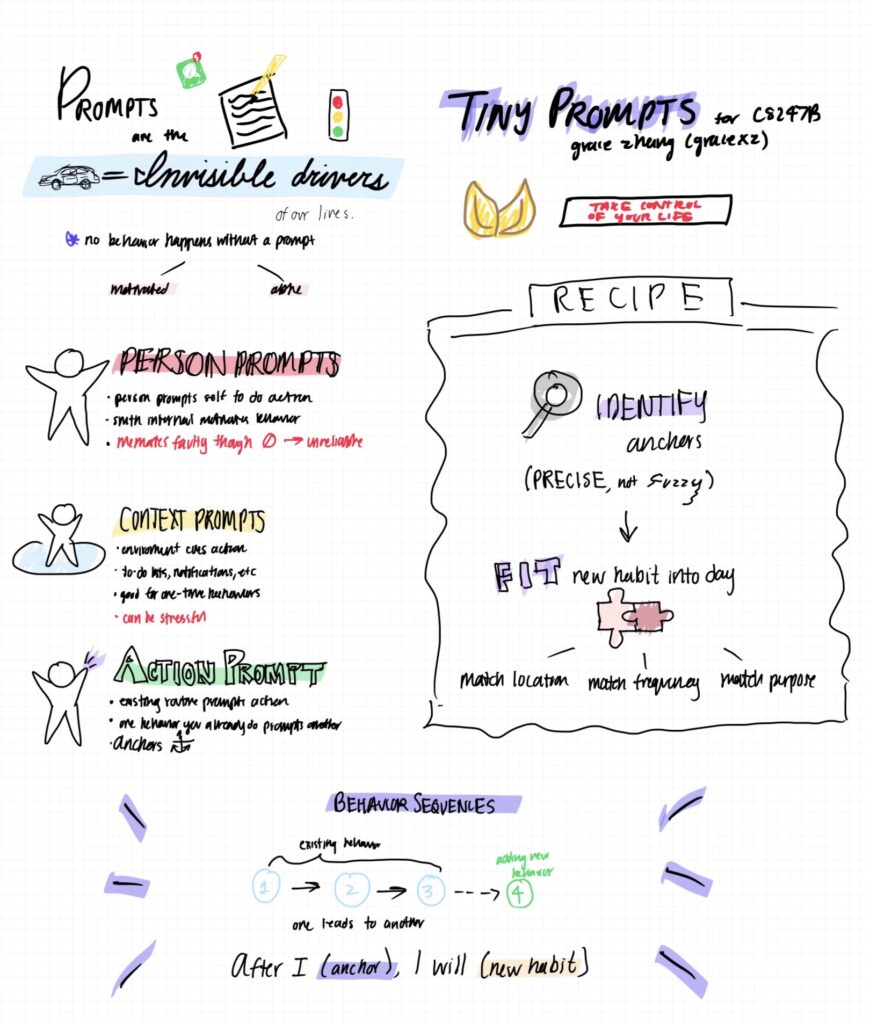Our intervention study results gave us the green flag to pursue a photo-based solution. (To get more info about our intervention study, read here.) This shaped our ideation during 6A as we individually worked on expanding on a photo-centric solution.
We began by throwing a bunch of different feature ideas out onto Post-its, whether they were as practical as journaling, or as out there as “yell D:<” to generate potential features we could build around or upon.
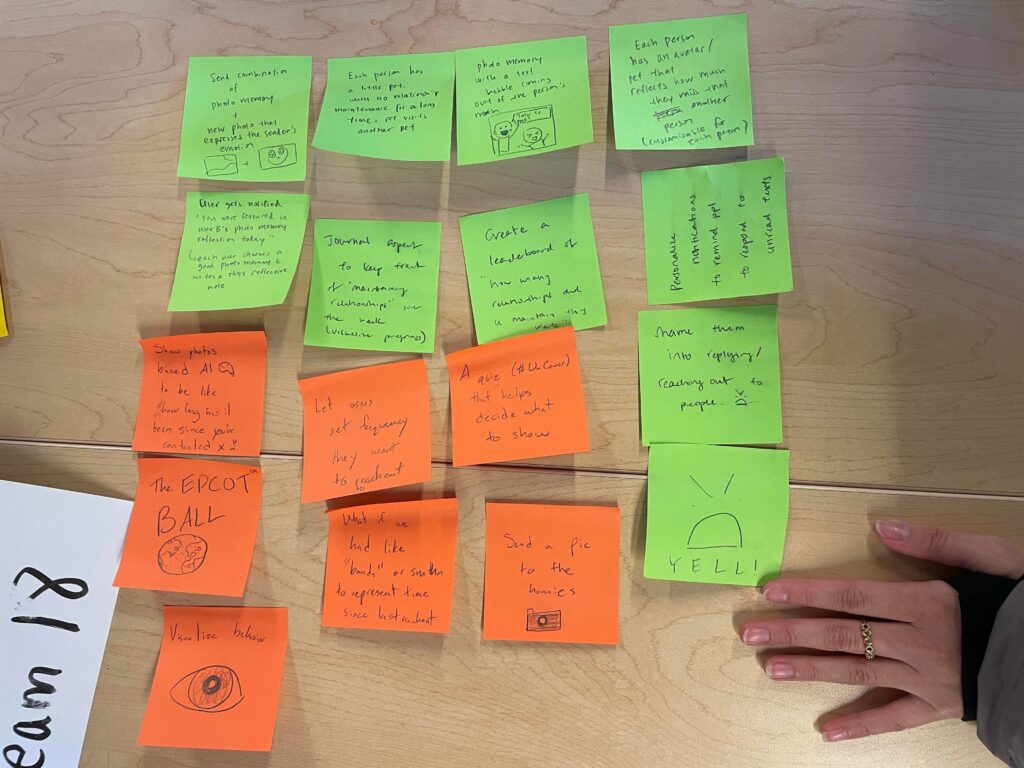
We then each chose our favorite idea from the stickie collection and fleshed them out as well as created concept sketches for them.
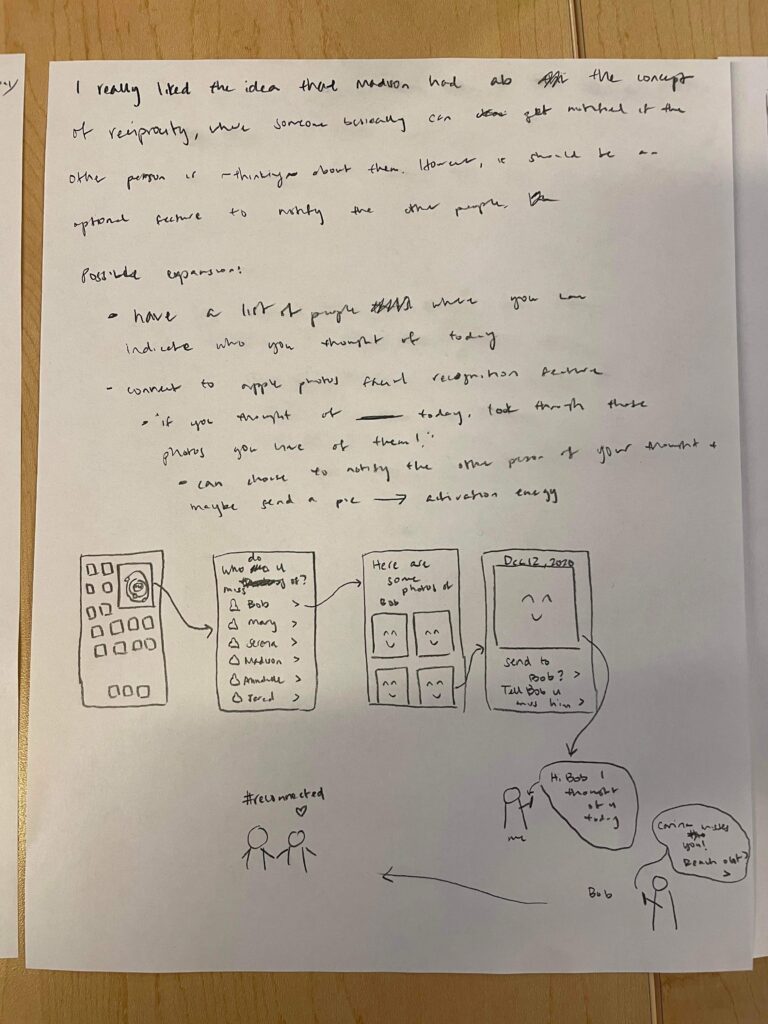
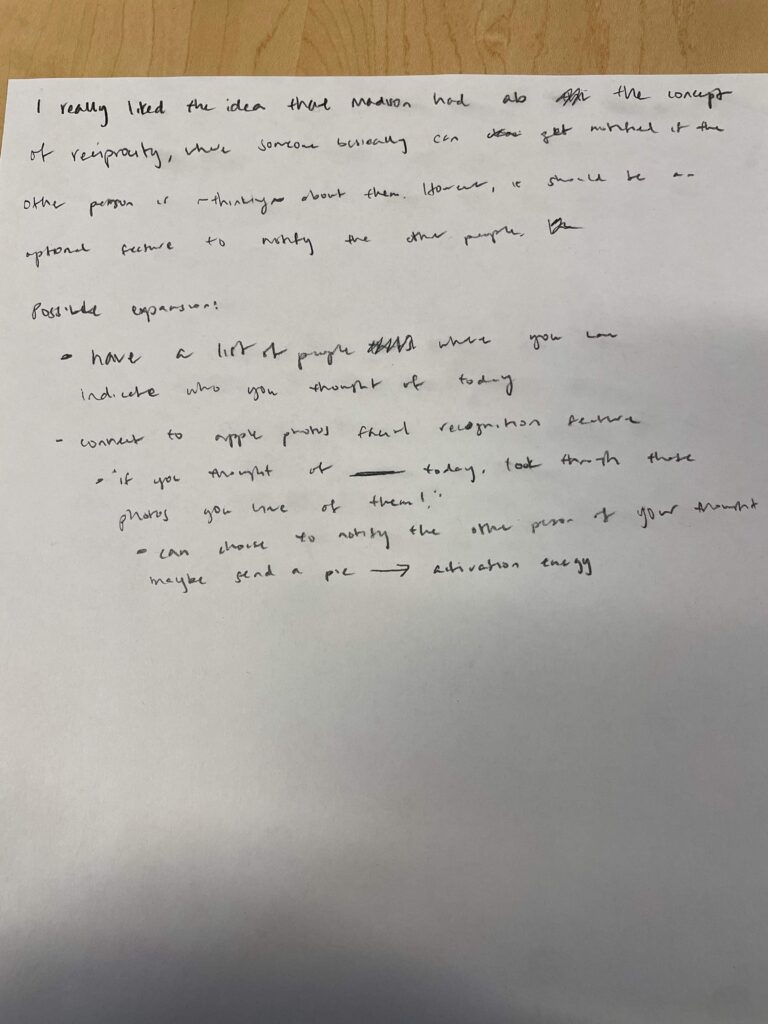

By the next stage of ideation, we brought together similar elements of our key solution: friendship proximity visualization, personal interactions and 1-on-1 interactions with photos (where journaling is a personal interaction, reaching out to a friend using a photo is a 1-on-1 interaction). There were variations in how we wanted to represent friendship proximity—for example, orbits around the user, riders on a ferris wheel, etc. Since we had similar designs, we decided that moving forward with this direction made sense without having to debate about alternative higher level concepts for our product to be framed around.
Assumption Mapping
From our solution ideation, we organized various features into viable, feasible, and desirable, noted below.
- Viable (MVP)
- Choose a photo from albums
- Share a photo with friends in app + chosen method of communication
- Contact list to add friends
- Viewing photos of a friend
- Jotting down comments on a photo when sending to friend
- Feasible
- Template message when sending to friend
- Desirable
- Multiple main visualizations of friends you want to keep up with
- Secondary visualization between pairs
- Facial reactions on a photo (like BeReal)
We then gathered assumptions that these features rely on and mapped them into this 2×2 grid, where the notes in the yellow quadrant (important and unknown) are the most crucial in further development.
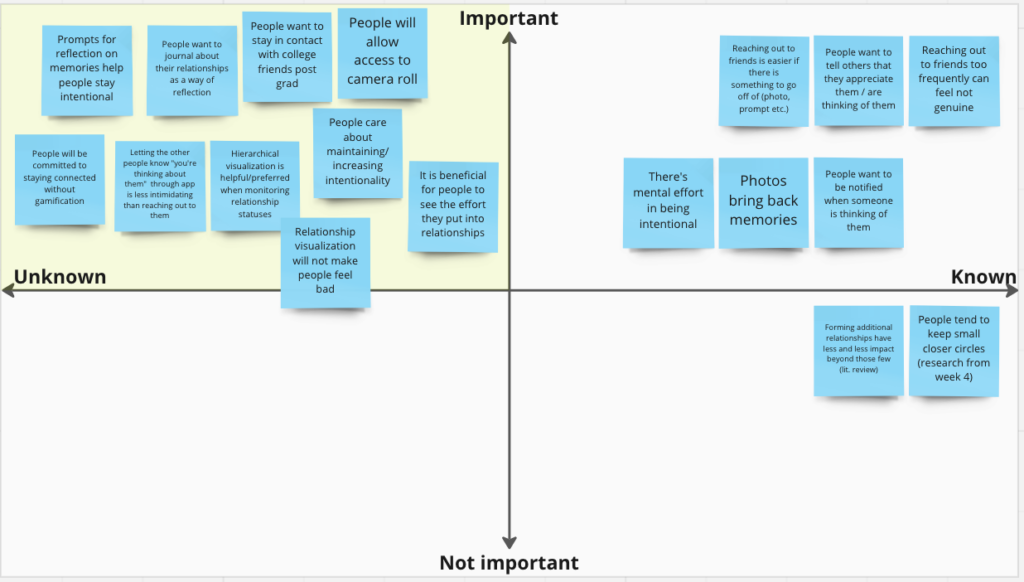
We decided to test the three of the most important assumptions from the yellow quadrant to create tests to conduct to see if they hold.
#1 Prompts for reflection on memories help people stay intentional
Hypothesis: We believe that prompts for reflection on memories will help people stay intentional.
Test: To verify that, we will conduct an experiment where the participant picks a photo to reflect on and then a prompt about the photo to reflect on
Metric: …and measure if there is a significant difference in the reported intentionality between each reflection
Criteria: We are right if there is more reported intentionality in the prompt reflection than the non-prompt reflection.
#2 People want to journal about their relationships as a way of reflection
Hypothesis: We believe that people want to journal about their relationships as a way of reflection
Test: To verify that, we will conduct a survey asking about people’s current and desired reflection habits
Metric: …and measure how popular journaling is among the participants.
Criteria: We are right if there is a significant chunk of participants who journal or would be interested in journaling.
#3 People want to stay in contact with college friends post grad
Hypothesis: We believe that people want to stay in contact with college friends post grad
Test: To verify that, we will conduct a survey asking people about their desire to maintain college friendships post-grad
Metric: …and measure how many of the participants want to continue their college relationships after they graduate.
Criteria: We are right if the majority of participants want to maintain those relationships.
Signing off,
Team 18

